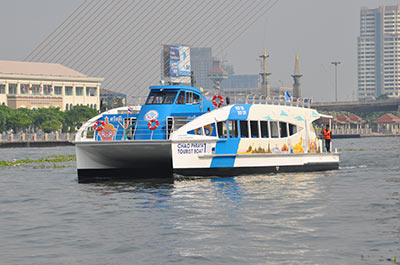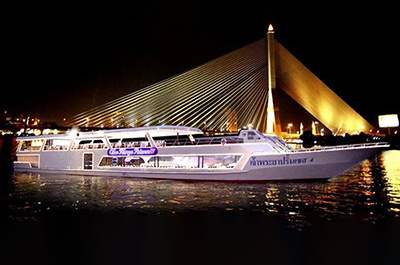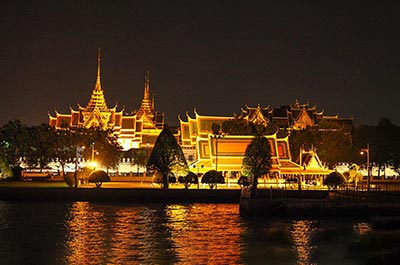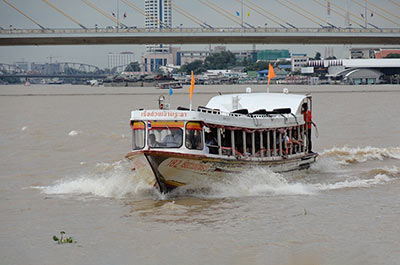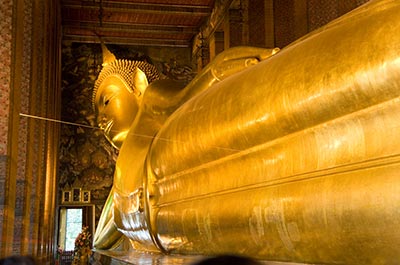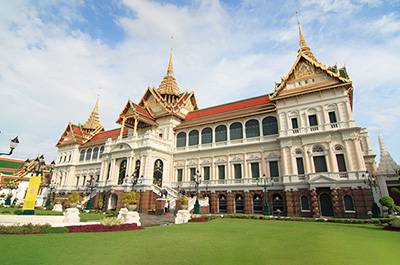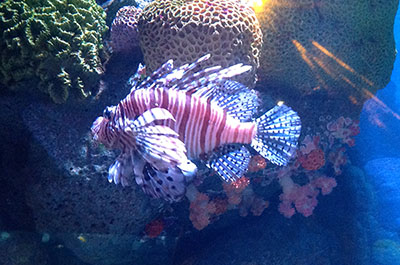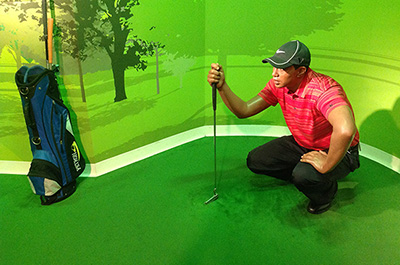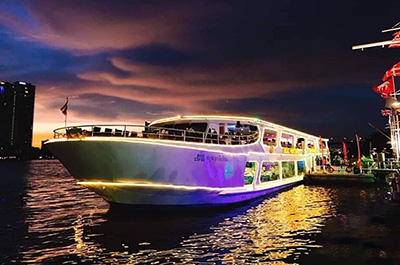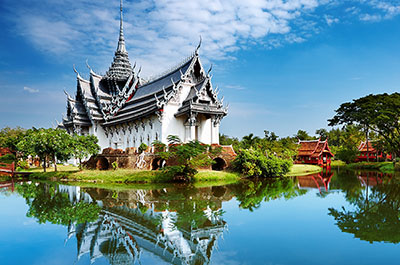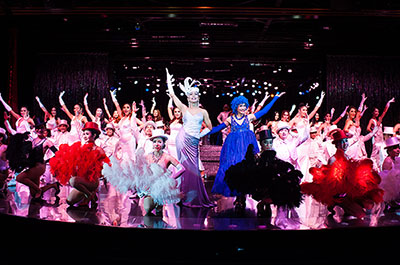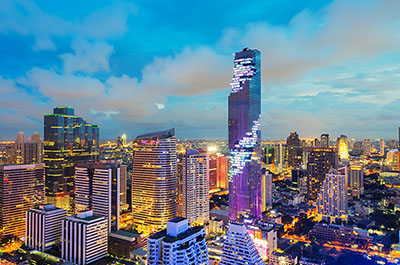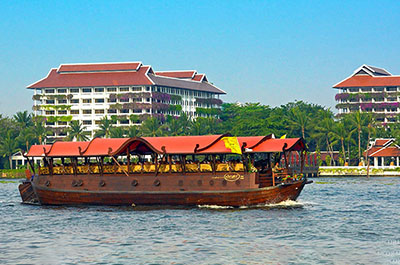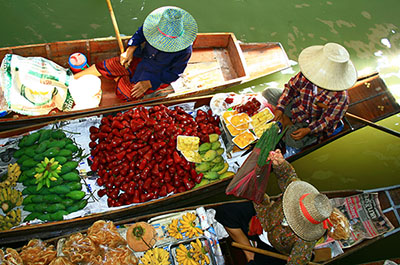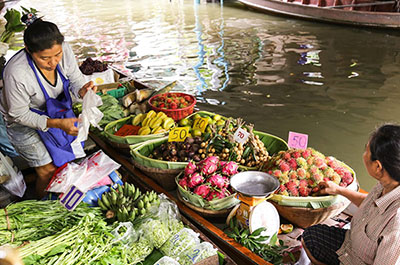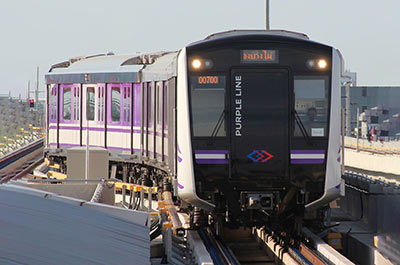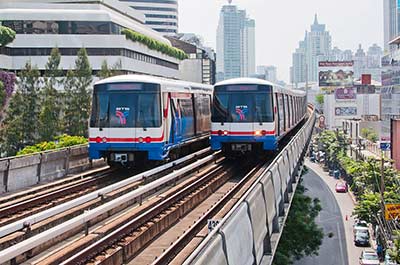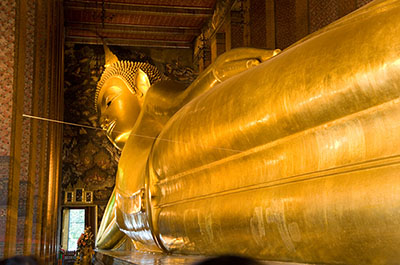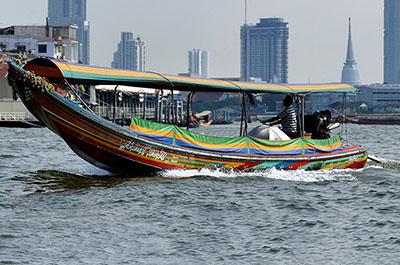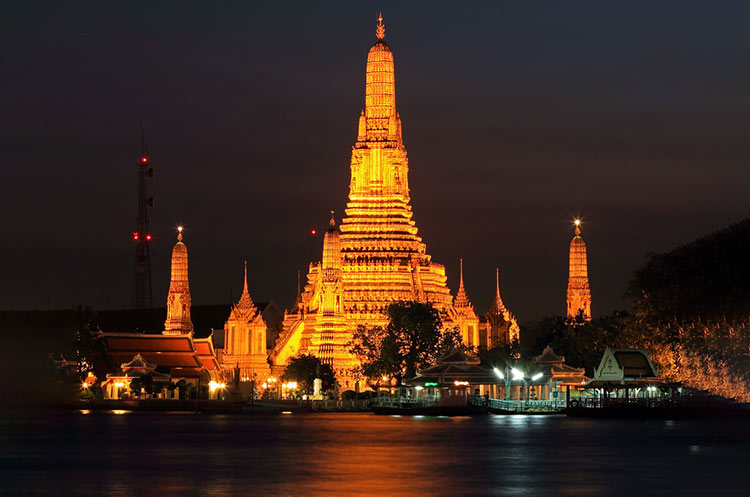
Wat Arun, the temple of Dawn
On the West bank of the Chao Phraya river
Bangkok
One of Bangkok’s most famous landmarks and known from many postcards, the Wat Arun is best known for its massive prang, a tower on the Chao Phraya river bank built in Khmer architectural style. The prang with its height of more than 80 meters is the highest in Thailand.
The Wat Arun, commonly known as “the Temple of Dawn”, is one of Thailand’s most revered temples.
Visit the temple
Visit Wat Arun and two other famous Bangkok temples, the Reclining Buddha temple and the temple of the Golden Buddha on a morning or afternoon tour.
The prang of the Wat Arun
The prang was raised to its current height of over 80 meters. The Khmer style tower is decorated with millions of small pieces of colorful Chinese porcelain, which was in those days used as ballast on ships from China.
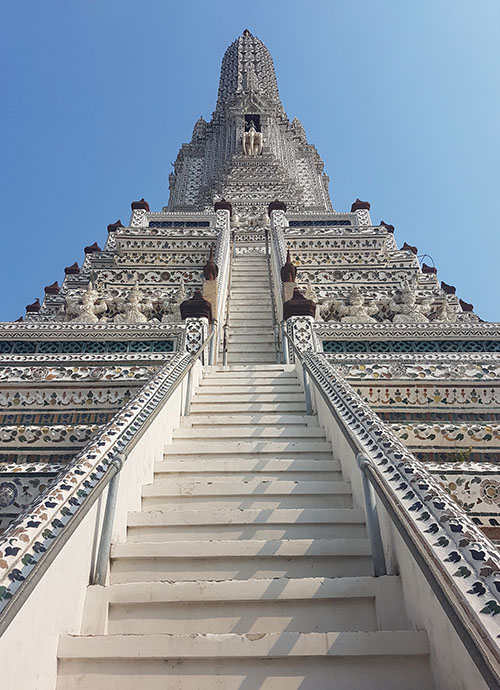
A steep stairway on the side of the prang leads up to a terrace. You can climb the stairway giving a nice view of the river and surrounding area. Because the stairs are very steep and narrow it is not possible to go all the way up. Around the main prang are four similar smaller prangs.
Other structures at the Wat Arun grounds
Although the Wat Arun is known for its impressive prang there are other buildings that are worth investigating.
The ubosot or ordination hall
The ubosot or ordination hall houses the principal Buddha image of the Wat Arun. The image was designed by King Rama II himself, who was very interested in poetry and art, and who ruled from 1809 until 1824.
The base of the image in subduing Mara mudra contains the ashes of the King. The walls contain beautiful murals created during the reign of King Chulalongkorn (Rama V).
Four mondops surrounding the prang
Around the central prang are four mondops or pavilions enshrining Buddha images representing four important occurrences in the life of the Buddha, namely birth, first sermon in Sarnath to five monks, enlightenment and passing into final nirvana.
Cloister & Buddha footprint mondop
The cloister of the temple complex contains more than 100 Buddha images.
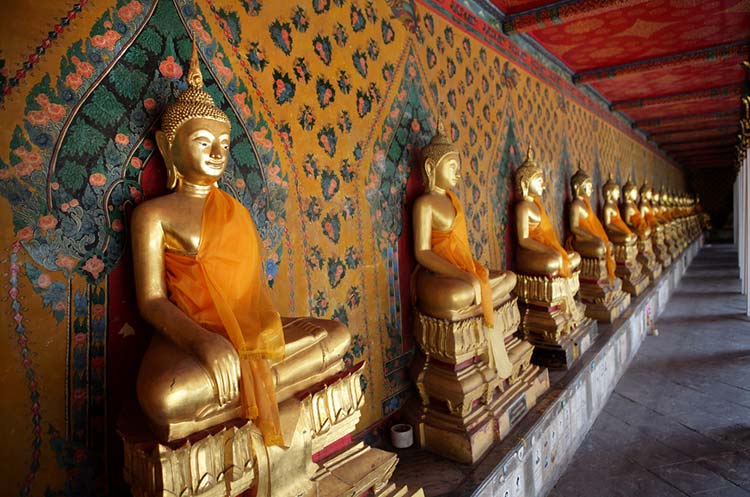
A mondop houses a copy of the Buddha’s footprint. A number of very large guardian statues in the Wat Arun are very similar to those in the Grand Palace. On the river side you will find a number of salas (open air pavilions).
One of Bangkok’s oldest temples
It is also one of the few temples that predates the founding of Bangkok and the start of the Rattanakosin era in 1782. It’s prang dominated the skyline around the Chao Phraya river during the early days of Bangkok and today is still one of the most impressive sights on the river.
After the destruction of the former capital Ayutthaya by the Burmese in 1767, King Taksin the Great established Thonburi on the West bank of the Chao Phraya river as the new capital.
Opposite the Grand Palace
The area where the Wat Arun stands, which is almost directly opposite of the Grand Palace on the other side of the river, was chosen as the location for the new capital of the Thonburi Kingdom. The temple that was originally named Wat Jaeng was build on the remains of an older temple named Wat Makok dating back to the Ayutthaya era.
With the death of King Taksin in 1782 came the end of the Thonburi Kingdom and the start of the Rattanakosin Kingdom, that established Bangkok on the other side of the Chao Phraya river as the new capital.
During the reign of King Rama II the temple was renovated and renamed Wat Arun Rajwararam or Wat Arun for short.
See the temple from the river
The most relaxed way to see the Wat Arun is from the river. Take an evening dinner cruise and see the imposing prang beautifully illuminated while enjoying dinner.
Also visit the Grand Palace & Wat Pho
A visit to the Wat Arun is easily combined with two other Bangkok highlights. On the other side of the river right across from Wat Arun is the Wat Pho, better known as “The Reclining Buddha temple”.
Adjoining the Wat Pho is Bangkok’s most famous attraction, the Grand Palace and on its grounds the Emerald Buddha temple, the Wat Phra Kaew.
Location
The Wat Arun or Temple of Dawn is located on Wat Arun Amarin Road on the West bank of the Chao Phraya river, opposite the Wat Pho temple and the Grand Palace.
How to get to the Wat Arun
You can get there by river boat, taxi or tuk tuk.
There is no Sky Train or MRT Subway station in the area.
River boat
The best way to get there is by river boat.
If you want to visit several sites on the river buy a day pass for the Chao Phraya tourist boat. With this ticket you can get on and off the boat as many times as you want on any of its nine piers.
Otherwise take a Chao Phraya express boat to Tha Tien pier at the Grand Palace on the East bank of the river. From there, cross the river with the Tha Tien express boat. During the short ride you will have excellent views and photo opportunities of the huge Wat Arun prang.
Tuk tuk or taxi
If you start from the downtown area away from the river take a metered taxi.
If you are close to the temple, take a tuk tuk.
Opening hours
The Wat Arun opens daily from 8 am until 5:30 pm.
Entrance fee
Admission charged at the ticket booth is (Thai Baht):
Nearby attractions
Nearby attractions across the river
- Grand Palace
- Wat Pho
- Pak Khlong Talat flower market
- Wat Phra Kaew Emerald Buddha temple
- Rattanakosin historical district
Other temples in Bangkok
Bangkok’s best attractions
